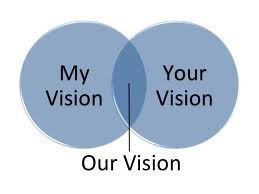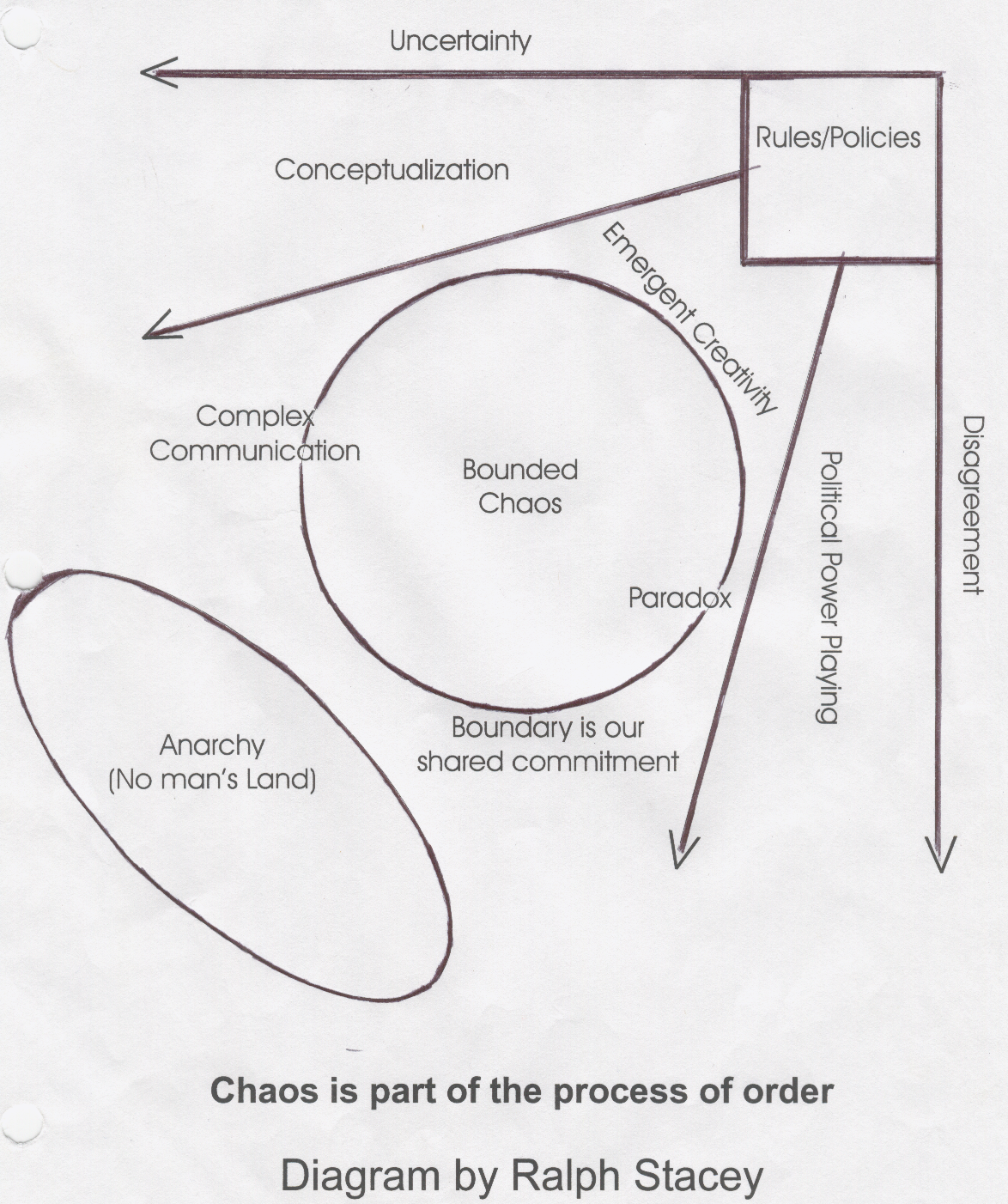One of the ‘bold ideas’ that has peaked my curiosity, challenged me, been the source of some of my deepest sorrow, and yet continues to be one of my core passions, is my pursuit of healthy community, marriages, and team reflected in the dance of real unity with diversity. After years of some successes, and a few failed attempts, here is the seminal question I keep asking: “Is it possible this side of heaven for a group of individuals to not only co-exist, but start and sustain a journey of living a shared mission, cause, or vision together where every person is valued, and every person takes full ownership for the vision? This haunting question has been at the heart of many of the ‘irreconcilable’ conflicts in marriages, teams, and communities that I have observed or been a part of. On the other hand, I have tasted of the joy and pleasure found when a couple, a community or a team accomplishes a vision or goal that they could never have achieved on their own. This quest to explore how real unity with diversity works has become a life long mission for me.
Here are the two default choices I have been guilty of, or seen repeated over and over again in other groups in the pursuit of a shared vision. The first alternative is when a few who hold the power, either by position or in a defacto manner, decide what the ‘shared vision’ should be for the marriage, team, or community, and then use various and sundry means to get compliance from the group, community or partner to make the vision a reality. This is simply a contrived form of shared vision. There is no real ownership down the line, and when push comes to shove people will not voluntarily sacrifice to see the vision become reality.
The other option is when the group decides that they are too diverse, and instead of plunging into the hard, yet rewarding work of shaping a shared vision, the group fragments to become a bunch of individuals doing their own thing. They are held together loosely by a name or relational connection that is fuzzy in nature. There is rarely any dialogue, discussion, or decision making around a common vision. Neither of these choices is very rewarding or results in a true shared vision.
I would like to share with you a few practical principles, skills, and practices that I am slowly learning in my journey of shaping an authentic shared vision with my wife, my family, my community, and as I coach other teams in any culture. I have in no way arrived or fully mastered these skills, but whenever I see them demonstrated, I see a healthy dynamic in marriages, families, teams, and communities of whatever nature. Below are some pointers, tips, and exercises to help you on this messy, yet fulfilling journey of living a shared vision in your marriage, team at work, church community.
To Shape a Shared Vision:
- Start with a circle of 2-5
Often we try to bring too many people to the table at the beginning of the journey in exploring a shared vision. The bigger the initial group the more diversity there is, and the harder it is to come to consensus without someone imposing their version of the shared vision on the group. The other reaction to having to many people trying to shape a shared vision is the group giving up on the experiment because it takes so much energy to agree about anything. There is a lot of talk, but very little gets accomplished. Look for some folks who have a common conviction and are convinced that they can do more together than they could do apart. Beware of ‘takers’ who want to get the benefits of a shared vision without paying the cost, and ‘whiners’ who would rather complain about everything that is wrong without doing anything to bring about change.
A healthy shared vision is shaped around being for something not just being against something!
The greatest sign and wonder is when 2 or 3 different people can not only get along, but actually accomplish something together!
Here are a couple questions to get the ball rolling: What is it that we want to create together? What does the preferred future or dream that you would like to build together look like?
- Cultivate a culture that moves from Compliance to Commitment
Commitment is when everyone owns the vision as their own, and is willing to voluntarily sacrifice time, energy, and money to see the vision become a reality. The difference between commitment and compliance is that the primary motivation is privilege not obligation. When there is a culture of commitment in the team people talk about it being our vision versus your or their vision. People will commit to a shared vision if it reflects their own personal vision. What people own they will wholeheartedly pay the price to see happen.
In his book The 5th Discipline, Peter Senge describes on page 203 the varying attitudes people have towards a vision.
- Commitment: Wants it. Will make it happen. Creates whatever “laws” (structures) are needed.
- Enrollment: Wants it. Will do whatever can be done within the “spirit” of the law.
- Genuine Compliance: Sees the benefits of the vision. Does everything expected and more. Follows the “letter of the law”. “Good Soldier”
- Formal Compliance: On the whole, sees the benefits of the vision. Does what’s expected and no more. “Pretty good soldier.”
- Grudging Compliance: Does not see the benefits of the vision. But, also, does not want to lose their job. Does enough of what’s expected because he or she has to, but also lets it be known that he or she is not really on board.
- Noncompliance: Does not see the benefits of vision and will not do what’s expected. “I won’t do it; you can’t make me.”
- Apathy: Neither for or against vision. No interest. No energy. “Is it five o’clock yet?”
Here are a few questions to help cultivate commitment: Does our vision reflect your personal vision? Are you serving this vision out of obligation or privilege? What would help you move from compliance to commitment? Are we all willing to give time, energy, and money to see this vision become a reality?
- Give Space and Time for Conversation to Understand and Translate the Vision and Values:
The difference between aligned vision and shared vision is when we think we mean the same thing by a common word we both use interchangeably. Yet in reality we are lost in translation. If we describe in practices or by tangible experiences what we mean by the word, we would find out that though the end goal of our vision may be the same, how we would achieve the vision is quite different. For example, if we ask each other if we believe in the word ‘community’ most of us would give an emphatic “yes!” If I then shared my expectations of community whereby I longed to live in the same house or neighborhood with some people where we ate meals together, we pooled our money, and we all committed to the mission of stopping the injustice of human trafficking, your mouth might drop open with shock. What you expect from community is simply getting together on Monday night to watch football and have a beer and wings.
Here are some essential tools for translating vision and values:
- Translate your abstract values into everyday practices and habits that are concrete and easily applied. For example if one of your values is ‘mentoring’. Take the time to go around the table and have each person share a life changing or positive and negative story of their experience of mentoring. Then go around the table again and have everyone share a practice of mentoring. Resist the temptation to jump in to sell your point of view, to make value judgments, or to prematurely make decisions about direction. Simply listen to each other and try to understand one another.
- Make decisions that flow from a consensus around your common values and practices that you have agreed on.
- Keep coming back to and asking the question “Why do we exist?”. Then check to is if everyone is still on board.
- Take time to surface ‘unspoken expectations’ around the vision. What is the ‘spoken culture’ versus the ‘unspoken culture’ of the team? Often we speak out values that we hope to practice, but in reality the real values are the ones that are deeply ingrained and demonstrated in our daily living. For example, if a church community says they value hospitality, yet when a new comer shows up at one of the church gatherings they are not greeted, people hover in their cliques, and the visitor leaves without a regular member speaking to them no less inviting them out for a meal. The reality in this community is that hospitality is a ‘head value’ not a ‘foot value’ yet.
- Keep demonstrating by action your agreed upon values.
- Nurture a Climate of Trust that Transcends the Cycles of Conflict and Change:
Trust is the glue that holds people and the shared vision together. It takes a long time to build trust, and it can quickly be lost. Teams and marriages will go through cycles of ‘high trust to low trust’ because of normal conflict and change. Shared vision is not stagnant. People change as they discover more clearly who they are and what they are about. Where they once had a shared vision with a team or another person, they may now have aligned vision. Here are some questions to help process conflict and hopefully move from low trust back to high trust:
- Are you for me?
- Will you be honest with me?
- Are we going in the same direction? (clarifying shared vision)
- Will you do what you say? (over promising and under delivering)
- Do you have the resources to do what you say?
The result of working through conflict and change may result in some people needing to move on and the team morphing. The challenge is to do this without the collateral damage of destroying the relationship. In marriage, the hope is that both sides will be willing to compromise and discover and a win/win or 3rd alternative to their conflict.
Learn to Embrace Mess, Paradox, and Chaos:
The reality is that as much as we think we are in control, we’re not. Life is messy. Change is happening at a rapid pace all around us. The way forward is not always a straight line. That means our shared vision together will go through shifts and will need to morph. The way forward is to be at ease with, and to learn to surf the waves of seeming chaos to reach order on the other side. This is what we call bounded chaos.
This does not mean giving into anarchy where everyone does their own thing, or on the other hand reverting to forms of command and control to reach a contrived shared vision through rules and fear. The skills needed for navigating the waves of chaos are complex communication, a shared commitment to one another and the vision, living with the tension of paradox while giving time for the emergent creativity to bubble to the surface. Continued risk taking, and the morphing of structures to serve the life of the vision are essentials to shaping a shared vision in this day and age.
Have fun as you dive in with a few to explore and experiment what it would look like to build something together that you could never achieve on your own!
By Tim Schultz



